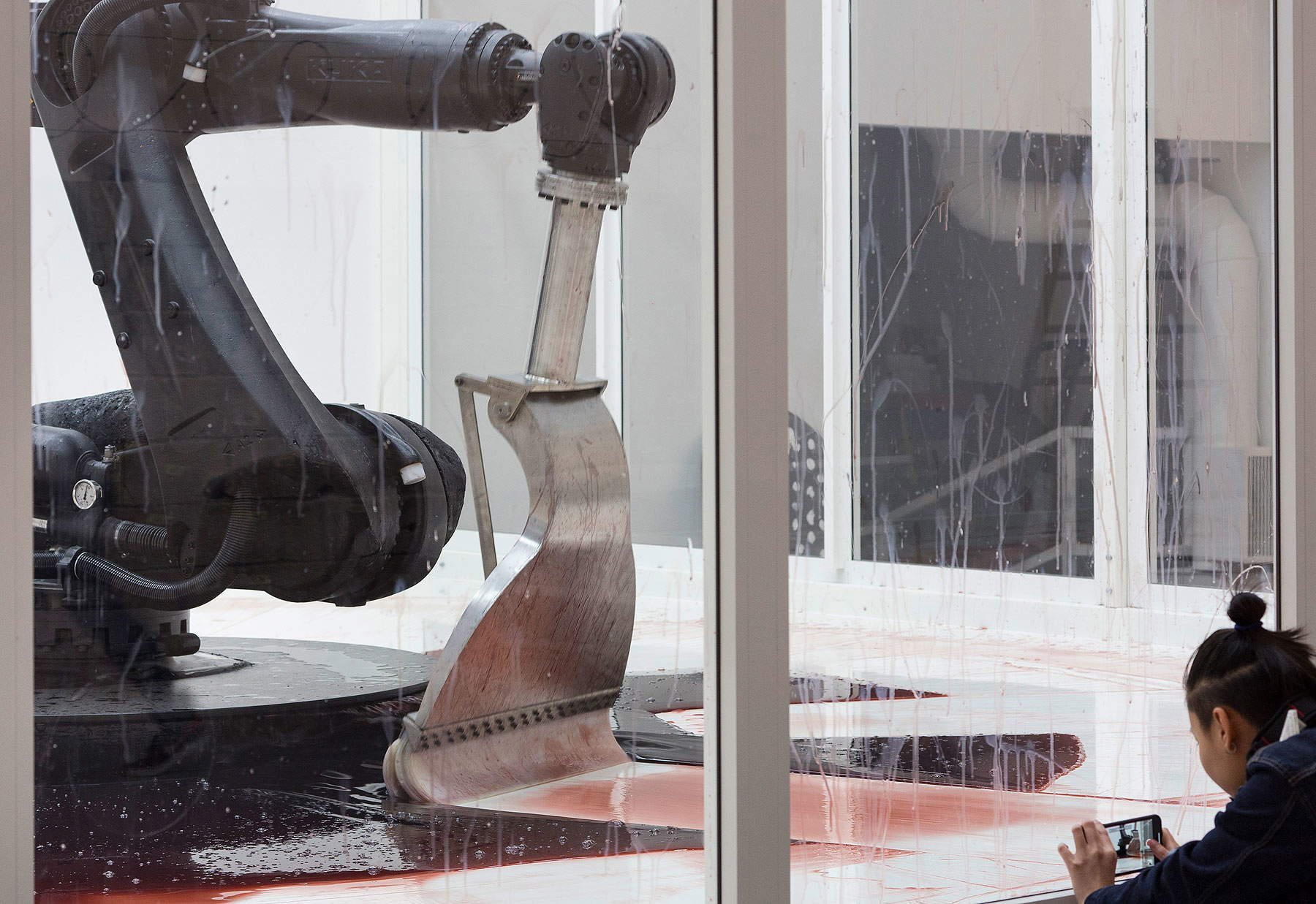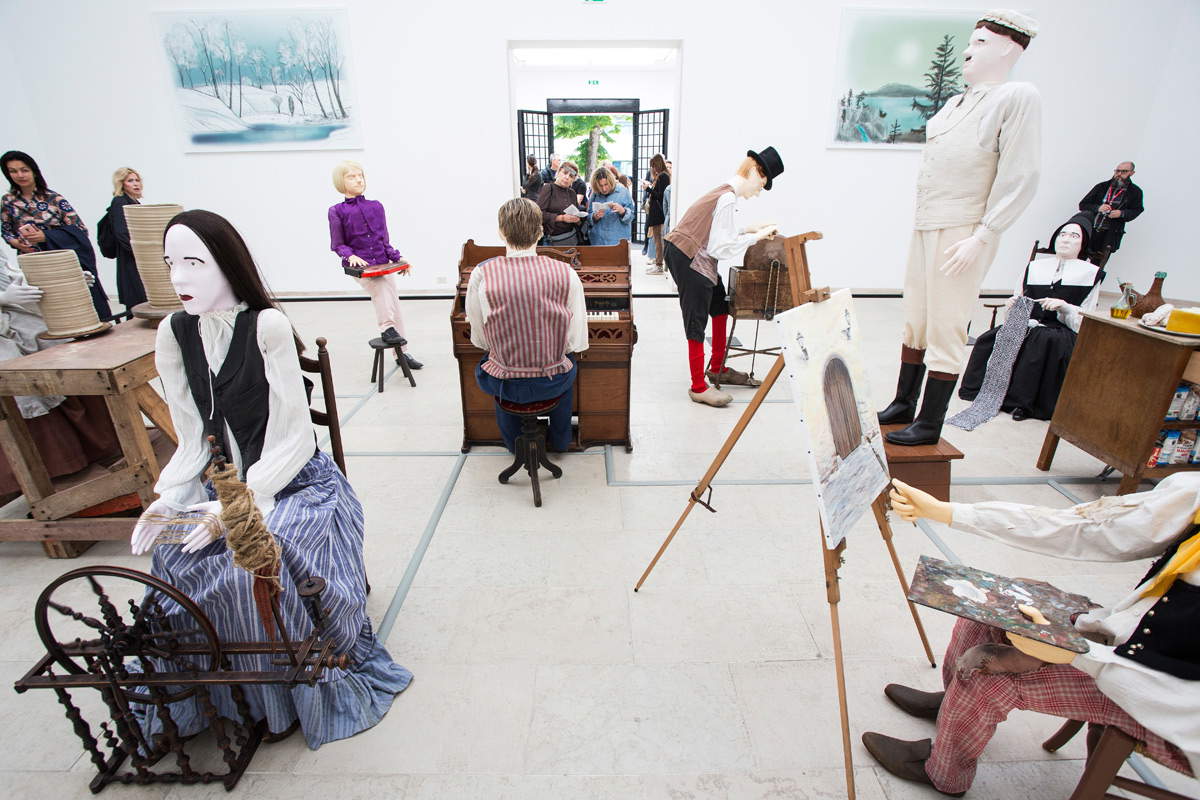Visiting the Venice Biennale is no easy feat
Visiting the Venice Biennale is no easy feat. Visiting the Venice Biennale is a commitment, for body and mind. Visiting the Venice Biennale is an adventure, and like all adventures, it can be rewarding and frustrating at the same time.
We are gratified by the unseen discoveries, the hidden meanings that suddenly become apparent, and where we did not understand everything becomes clear, we finally feel part of something in which we are also protagonists. A moment later, without warning, we feel frustrated to discover around the corner, just as suddenly, something that contradicts what we were sure we had just clarified within ourselves, through our senses, thoughts and emotions. Visiting the Venice Biennale is like being seated on a seesaw that sways us in a continuous alternation of viewpoints, all too abruptly, from here to there and back again.
Yet it is an adventure, and as such it is not forgotten, something remains, something else less, but this process is a constitutive part of its essence.
The Biennale must be visited by protagonists and at the same time by marginal presences-a paradoxical situation. Let us try to explain ourselves better by analyzing the two, seemingly opposite, conditions. In the first case, we immediately feel called upon to construct meaning: we are not allowed to hold a passively contemplative attitude (after all, when are we ever allowed to do so in front of a work of art? But we are inclined to think so when we visit a museum or a “traditional” exhibition). Few captions, sometimes none, sparse explanations and very often cryptic in the concepts they intend to evoke, rather than to explicate; we visitors thus become the natural followers of those meanings, we feel called by what we see, almost empowered to search for a meaning of the work. In the second case, on the other hand, for essentially the same reasons, we feel excluded, somewhat as was the case in Renaissance courts, when one entered a lord’s studiolo, a room in his palace, and the iconography of the images painted there was a mystery, clear only to a few, those few who had precisely set it up.
We are faced with a paradox then: being called upon to complete the meaning of the work at the very moment when it is masked from our eyes, or at any rate not directly expressed.
At this point a further element comes into play, one that is fundamental for understanding the unique exhibition phenomenon that is the Venice Biennale: its vastness; let us also not forget the Arsenale venue, where the Italian Pavilion is also located. Impossible to visit it entirely in one day, so on what basis to choose? Several factors come into play, more purely cultural and more properly character, emotional, casual even.
The Biennale Pavilion at the Giardini should be seen: within it we should find the trace, a kind of mental map that presides over the theme chosen for the current edition; since it is the Pavilion in which the curator sets up his exhibition, a clue we should have in order to then move freely among the different pavilions that await us.


In the last Biennale, in 2019, entitled May You Live In Interesting Times, curated by Ralph Rugoff, the central space of the Pavilion was occupied by an imposing work that dominated the scene, Can’t Help Myself, created in 2016 by the two Chinese artists Sun Yan and Peng Yu: a mechanical arm, a robot, that engaged in a repetitive gesture to perform an impossible action, which was to collect red, blood-like liquid that continuously overflowed from the area in which it was to be contained, according to the “programming” originally set. The robot acted according to a human gesture, insinuating in the viewer the feeling of being confronted with a visual, perceptual and emotional paradox. In the same Biennial, the Belgium Pavilion presented a work entitled Mondo Cane by Jos de Gruyter and Harald Thys, an installation that showed at the opposite end of the spectrum a world made up of figures with human features but reduced to disturbing automatons, puppets without a will of their own: what is the boundary between machine and man? Opening up horizons of thought about our time, scattered in innumerable traces in the path, sometimes obvious and strong as in these two examples: the work at the center of the Biennale Pavilion and an alternative world full of uneasy foreboding, between past and future, that occupied an entire National Pavilion.
We move like this, into the space of the Napoleonic Gardens, knowing that we will see some things, some things not, and this is where our adventure becomes frustrating: what if I miss something essential? Wasting time seeing something else less interesting, important and unique? This is not the spirit we must have to visit the Biennale; we would come out the loser. We must convince ourselves that the very relationship between what we get to see and what we will not see goes to make up the meaning of our experience of visiting the Venice Biennale, which is unique and unrepeatable in the same way, since it is about making connections, infinitely possible, between the different artistic proposals. The Venice Biennale is the most contemporary of contemporary exhibitions precisely insofar as it is the realm of the possible rather than that of the already realized; and that possible is determined by the presence of visitors who construct internal, ever-changing plots of meaning, rich in suggestions and visions, which can never be the same.
This contribution was originally published in No. 14 of our print magazine Finestre Sull’Arte Magazine. Click here to subscribe.
Warning: the translation into English of the original Italian article was created using automatic tools. We undertake to review all articles, but we do not guarantee the total absence of inaccuracies in the translation due to the program. You can find the original by clicking on the ITA button. If you find any mistake,please contact us.





























